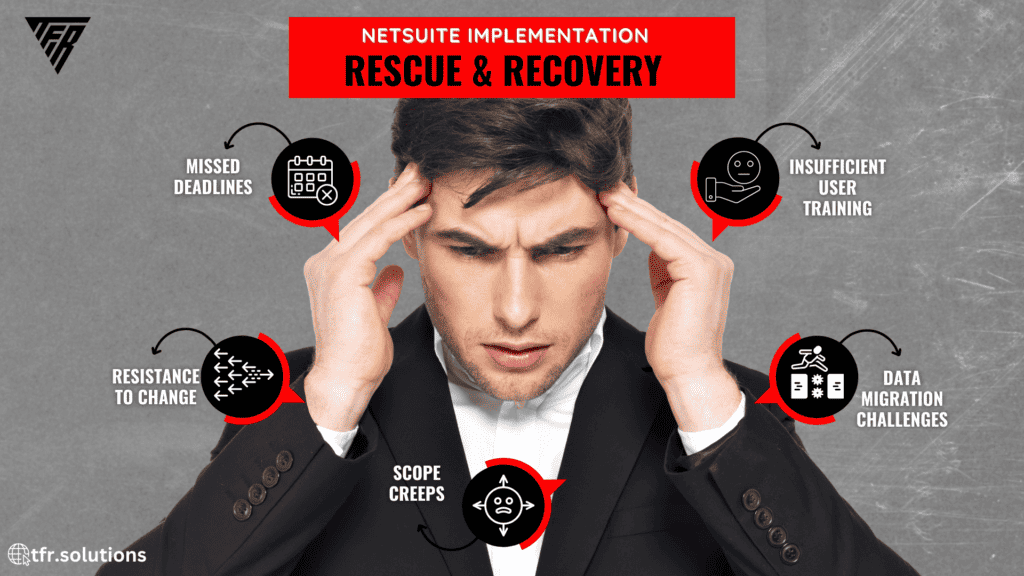Introduction: The Data Journey Starts Here
Imagine your data as the essential heartbeat of your e-commerce business, gracefully moving through various channels, imparting life to every digital touchpoint. It’s not just numbers or codes; it’s the collective digital narrative of your enterprise, weaving through your products, customer interactions, and financial transactions. Each datum, a vital fragment, helps to build your brand, fueling decision-making and strategy development. Now, envision the process of transferring this digital life force, this comprehensive data, to a new environment like NetSuite, with all its nuanced pathways and specialized compartments.
Sarah, an astute e-commerce business owner, perceives her data not as static numbers on a screen but as dynamic, invaluable assets crucial for her brand’s operational stability and future growth. When she contemplates migrating this voluminous, multi-faceted data, she isn’t merely considering a technical shift. It’s a strategic relocation of her business’s essence, ensuring each granule of information is not just transferred, but also adapted, protected, and optimized within its new digital residence.
In this journey, every aspect—from customer preferences and purchase history to inventory levels and financial transactions—needs to be moved with utmost precision and care. This transition isn’t merely a physical move; it’s about ensuring that every piece of data, in its transition, maintains its integrity, functionality, and security, ensuring a seamless continuation of operations and strategic activities in its new NetSuite home.
Unpacking the Intricacies of Data Migration
The concept of data migration, especially for comprehensive platforms like NetSuite, is often laden with complexity. The transportation of data isn’t a mere copy-paste action; it’s a meticulous orchestration where each piece of data, akin to an individual musical note, must find its rightful place in the new symphony of digital operations.
Sarah, tapping into her pragmatic mindset, understands that while data transfer might seem straightforward on the surface, the depth beneath holds a multitude of challenges and intricacies. Ensuring that every piece of data aligns with NetSuite’s architecture is imperative to uphold the integrity and functionality of each datum, from product SKUs and customer information to historical transaction data.
The Harmonization of Data Structures
Data, in its native environment, is accustomed to a specific structure and taxonomy. When migrating to NetSuite, the inherent structures and classifications of data must be reconciled with NetSuite’s own unique formatting and architectural requirements. It’s much like ensuring each musician in an orchestra is attuned not just to their own instrument, but to the collective harmony of the ensemble.
Understanding the potential dissonance between existing data structures and those within NetSuite, Sarah proactively sought to dissect and understand the architectural distinctions. This involved deep-diving into aspects like field mappings, data type consistency, and ensuring that relational data maintained its linkages amidst the migration.
Maintaining Data Integrity during Transition
Data integrity is the silent guardian of an e-commerce business’s digital operations. Ensuring that data retains its accuracy, consistency, and reliability during the migration process is paramount. Sarah realized that amidst the move, there’s a risk of data becoming corrupted, lost, or misaligned – which could disrupt business continuity and compromise decision-making accuracy.
Navigating this, she engaged in rigorous pre-migration planning, ensuring all data was adequately backed up, and established a robust error-checking mechanism during the transfer. By validating data pre and post-migration, she mitigated risks associated with data corruption, ensuring that every piece of data was accurately replicated in the NetSuite environment.
Addressing Compatibility and Customization Concerns
Custom fields, specific data input forms, and tailored reporting modules — these customized elements of Sarah’s previous platform had been developed over years to meet her brand’s specific needs. NetSuite, while robust and versatile, would need to be carefully configured to accommodate these customizations without sacrificing functionality or user experience.
By meticulously planning out the migration of these custom elements and strategically employing NetSuite’s robust customization capabilities, she was able to effectively mirror the functionality and familiarity of her previous platform, minimizing disruption for her team and maintaining the brand’s operational efficacy.
Seamless Integration with Existing Systems
Interconnectivity is key in today’s digital landscape. Your NetSuite environment does not exist in isolation but is interconnected with various other tools, platforms, and digital ecosystems utilized by your e-commerce brand. Ensuring these integrations are seamless post-migration is crucial to maintain operational cohesiveness across all digital platforms.
Sarah dedicated a segment of her migration strategy to meticulously map out these integrations, ensuring APIs were compatible, data exchange was seamless, and that operational symbiosis between NetSuite and existing systems was established, thereby ensuring an interconnected, unified digital operating environment.
Establishing a New Operational Rhythm
Migration is not the culmination; rather, it’s a pivotal point of transformation. As the data settles into its new NetSuite environment, establishing a new operational rhythm is vital to exploit the platform’s capabilities fully. Sarah, recognizing this, facilitated extensive training for her team, adapted workflows to leverage NetSuite’s features, and iteratively optimized operations to align with the newfound capabilities and functionalities availed by the platform.
Moreover, continuous monitoring post-migration ensured that any anomalies, performance issues, or misalignments were promptly identified and rectified, ensuring the new digital environment did not just mimic but enhanced the operational capability of her e-commerce brand.
Conclusion: A Symphony of Data in Concert
For e-commerce brands, data migration is an evolutionary step, a meticulous process where every piece of data plays a crucial role in maintaining and enhancing the digital vitality of the business. It is a symphony where each note, each datum, must be in concert with the overall operational melody of the brand.
Sarah’s journey exemplifies that with strategic planning, an in-depth understanding of both the source and destination environments, and a vigilant eye on maintaining data integrity and functionality, e-commerce brands can not only navigate the complexities of NetSuite data migration but also orchestrate a new, optimized digital operational symphony.
In your journey, consider aligning with experts who navigate the nuanced pathways of NetSuite, ensuring your data not only transitions but thrives in its new environment.
Embark on a seamless data migration journey with TFR Solutions. Our seasoned experts are attuned to the intricate melodies of NetSuite, ensuring your data is not merely transferred but is orchestrated to enhance your e-commerce brand’s operational harmony. Let’s compose your brand’s next digital symphony together. Contact Us Today.


